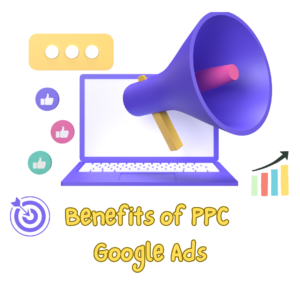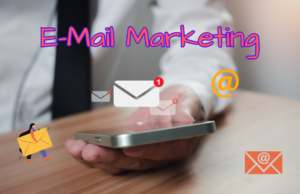When we advertise our products through Google ads, Facebook ads, and Instagram ads to promote and reach the targeted audience it won’t lead to immediate conversion. No buyer will decide to buy a product at first glance of watching the ad, he/she might take the time to decide whether to buy the product or not by comparing the benefits the buyer can acquire, price differences, research on the brand’s reviews to check whether it’s trustworthy enough to make deal and ratings of the customers for that particular product.
It’s a very long process. So the question is how we can make first-time visitors revisit our website to generate leads and conversion.
Here comes the work of remarketing and Retargeting that displays our brand ads to the people who are already aware and visited your website or the product landing page but didn’t have that much trust in your brand to make the end decision.
What is Retargeting?
Retargeting is an E-commerce PPC method through which the brand coordinates with the users who are aware of the brand but not to an extent where they can input trust in the brand, not the customer as they have some hesitation to make a purchase. It is observed that 26% of the customers return to the website through Retargeting which ultimately turns into a transaction (conversion).
When you display the ads for the first time it’s Pay-Per-Click whereas Retargeting ads gain Earn-Per-Click because it boosts the chances of conversions and sales.
What is remarketing?
Remarketing is a strategy to re-engage the users who are aware and already a part of the brand’s customer base by making a purchase but to encourage them to return and make a repeat purchase through various platforms, especially e-mail.
It focuses on increasing your Customer Lifetime Value (CLTV) and Customer Retention Rate (CRR).
E-commerce remarketing elevates the time gap by making a path to reconnect with the customer after making a purchase. It helps to maintain good customer retention & loyalty, reduce cart abundance and maximise conversion.
How does Retargeting Work?
Whenever a visitor lands on your website a cookie is sent to the visitor’s browser to get information on the IP address, the device used, page views, number of events (actions) done like form submission, add to cart option, downloads, etc so that you can tailor to display the ads based on their past events done on your site.
Once the visitor leaves your site, you can retarget that visitor by displaying the ads on the other website he/she browses.
What are the benefits of Retargeting & Remarketing?
- Gives better returns.
- Promoting products that have a high conversion rate to boost sales and revenue.
- Increases Customer Retention and Lifetime Value Rate.
- Reduces Cart Abundant Rate
The best strategies for remarketing and retargeting
Identify and segment the Customer
When you place an ad not every user needs to have the intention to buy the product, some visitors might just come to pass their time through browsing, some might just view the one product page and leave the site, and many of them even don’t have any intention to buy the product. So identifying a customer who is genuinely interested and willing to buy a product should be separated by analysing their user behaviour through the interaction with your site. To identify the customer based on their purchase motive we can set URL tracking to know which customer the ad should be displayed that has a higher chance of conversion.
Let the buyers feel the need of urgent to take quick actions
Creating a sense of urgency will help to take some quick actions in the fear of missing out on a good chance to buy the product with the best benefits. You can show the countdown of the sale end time, how many customers are buying the product and the festive season offer to boost your sales.
Work on Personalised Ads to display on unique users
The data you get through the user’s activities should be used perfectly to show the users the product they want instead of showing the products that are irrelevant to that specific user that has low conversion chances.
Let’s say a user interacted on your website and visited the sneakers category page so you should focus on displaying ads on the sneakers category rather than displaying formal shoes or other footwear. Also notify the users about the price drop, sales and special offers so that the chances of conversion increase even more.
Retargeting your products with Google Ads
Google Ads formerly known as Google Adwords is a PPC platform that displays paid searches on the Search Engine Result Page ( SERP). Google Ads RLSA Remarketing List of Search Ads enables you to display the ad to the visitor who has already visited your website and the people searching for the relevant keywords to reach out to audiences.
To create Google ads and Retargeting ads, setting up a UTM tag is a very important process that helps to track performance and identify the gaps between Retargeting campaigns to make further improvements. The process to create a UTM tag in Google Analytics ( GA4)
- Set the URL parameters through the URL builder. The three main UTM parameters are the source, medium and name of the campaign, while the other two optional parameters are term and content. The first three UTM parameters are required to track the campaign.
- After UTM tags are created successfully add them to your retargeting campaign URL.
- Analyse and track the performance of the campaign.
Retargeting your product through Meta ads
Meta is the parent company of famous social media platforms Facebook and Instagram. Just like Google Ads, it is part of an E-commerce PPC campaign to promote and boost sales of the business by displaying ads on Facebook and Instagram. To retarget you need to install Facebook Piexel which is a small snippet of codes that tracks all the actions taken by the visitors with your brand’s ads. After that procedure, customise the contacts and test it.
Bid less on the homepage and fewer conversational pages
Don’t waste your money on webpages that have less conversion rate, instead divert that fund to the top-performing landing.
Remarketing through E-mail Marketing
Retentional emails
Once a visitor becomes a customer it’s our responsibility to make them visit back and repeat the purchase to increase customer retention (a rate indicating the percentage of customers returning to the website). To make the customer return up-selling and cross-selling products emails based on their past activities and purchases should be sent with discounts and offers.
Cart abundant
Cart abandonment is the most common issue that determines the conversion rate and can be reduced through remarketing campaigns. By displaying the ads indicating an urgency to take quick actions about the product the user had in his cart with offers, the countdown for the sale and the percentage of the price drop have a higher chance of making the conversion.
Remarketing for the buyers who removed the product from the cart without completing a purchase
We discussed just above how we should remarket for the cart abandoned customers, but what about the customers who emptied their carts just before completing the purchase procedure?
To make them buy the product they were once looking for show them different discounts and benefits for buying the product.
Conclusion
Remarketing and Retargeting are excellent marketing strategies that have high ROI if executed properly.








